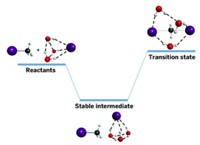Advertisement
Grab your lab coat. Let's get started
Welcome!
Welcome!
Create an account below to get 6 C&EN articles per month, receive newsletters and more - all free.
It seems this is your first time logging in online. Please enter the following information to continue.
As an ACS member you automatically get access to this site. All we need is few more details to create your reading experience.
Not you? Sign in with a different account.
Not you? Sign in with a different account.
ERROR 1
ERROR 1
ERROR 2
ERROR 2
ERROR 2
ERROR 2
ERROR 2
Password and Confirm password must match.
If you have an ACS member number, please enter it here so we can link this account to your membership. (optional)
ERROR 2
ACS values your privacy. By submitting your information, you are gaining access to C&EN and subscribing to our weekly newsletter. We use the information you provide to make your reading experience better, and we will never sell your data to third party members.
Physical Chemistry
Tracking Electrons In Ionic Liquids
Simulations will help improve applications in energy storage and nuclear fuel recycling
by Jyllian Kemsley
November 4, 2013
| A version of this story appeared in
Volume 91, Issue 44
Ionic liquids are hot in applications such as energy storage and recycling spent nuclear fuel, both of which involve exposing the liquids to electronic processes. But little is known about the interactions of the liquids with electrons. A research group led by Claudio J. Margulis of the University of Iowa has used quantum molecular dynamics simulations to study what happens in the first few picoseconds after an electron is injected into liquids likely to be used for such applications (J. Am. Chem. Soc. 2013, DOI: 10.1021/ja409338z). The group specifically studied alkylammonium- and pyrrolidinium-based ionic liquids containing bis(trifluoromethylsulfonyl)amide anion. They found that the electron is initially delocalized over several anions and moves among sets of anions. Over the course of 50 femtoseconds, the electron becomes localized onto one anion and initiates the ion’s fragmentation, likely by breaking a bond between nitrogen and sulfur. Better understanding of these processes will help researchers determine which ionic liquids would best resist electron-induced degradation and provide a more detailed picture of electron-transfer reactions in ionic liquid systems, Margulis says.





Join the conversation
Contact the reporter
Submit a Letter to the Editor for publication
Engage with us on Twitter